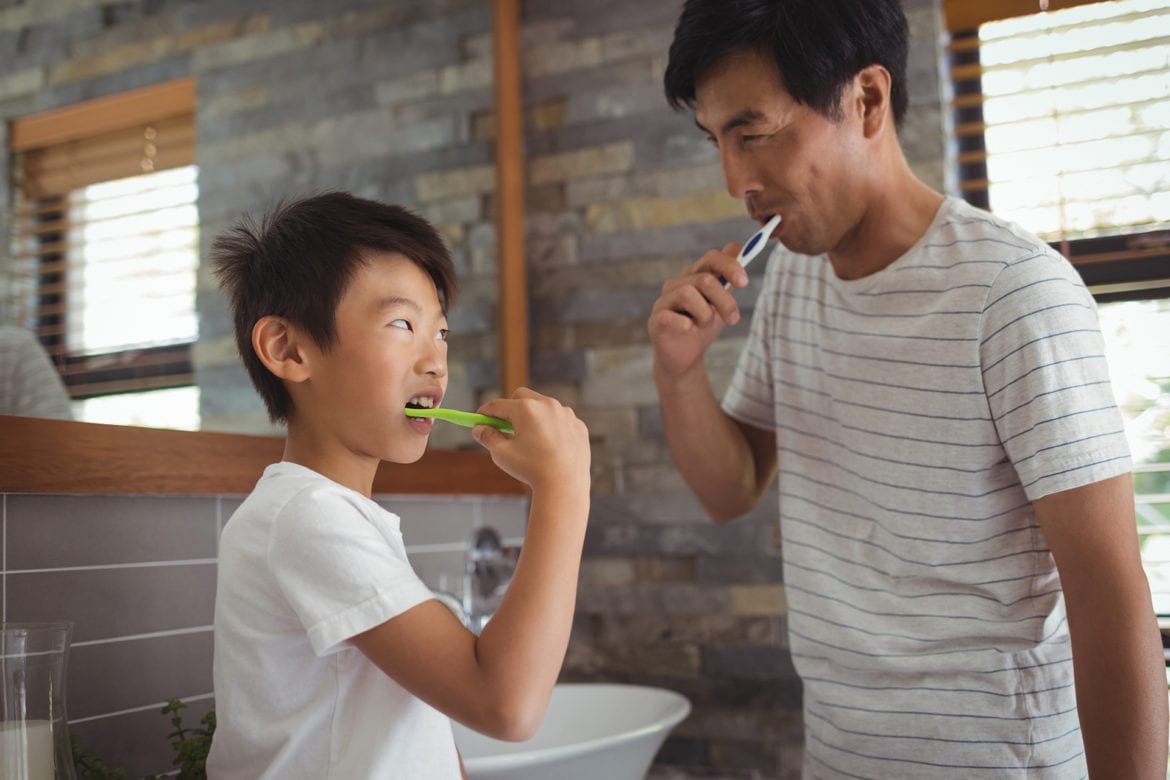Getting a cavity is no fun—but getting a cavity when you’re stuck at home is even worse. Developing a daily oral care routine that you stick to is important, especially now that your dental office may be closed or accepting limited patients for a while due to the coronavirus (COVID-19) pandemic. Here are some easy at-home tips on how to take care of your pearly whites during quarantine so you don’t end up with a massive toothache (or dental bill) later on.
It’s no secret that brushing your teeth will prevent a cavity—but it depends on how long you brush. According to Dr. Leedia Riman, DDS, you want to brush twice a day at minimum (once in the morning and once in the evening), floss just before bedtime, and brush for two minutes while using a soft toothbrush. “Use a timer, because most people brush much shorter than two minutes,” she says.
Also, make sure to use a fluoride toothpaste, which helps prevent tooth decay, and have your toothbrush pointed at a 45-degree angle against your gums. Remember: Toothbrushes should also be replaced every three to four months or when the bristles start fraying.
Eat “detergent foods”
Dr. Riman suggests eating certain foods—such as green apples, carrots, cucumbers, and leafy greens. These foods are named “detergent foods” because, as the name implies, they act like scrubs and keep your teeth clean. Green tea has also been found to have anti-cavity properties because of its antioxidants.
However, you want to avoid foods high in sugar and use straws when drinking juices or wine so they don’t stain your teeth. Drinking water also helps to flush out food residue and sugars left behind from sweets, which bacteria love to cling to.
Use an electric toothbrush
While a manual toothbrush works, studies have proven that an electric toothbrush can remove more plaque. According to a 2014 study by Oral Health Group, participants claimed that their plaque was reduced by 21 percent and gingivitis by 11 percent after using an electric toothbrush for three months of consecutive use.
Quip electric toothbrushes have a sleek design that comes in cool colors like silver, gold, copper, and black. The starter kit includes a plastic or metal electric toothbrush (your choice), toothpaste, floss, and the option to subscribe to the refill plan so you’ll never forget to replace your brush head.
Brush with baking soda
Most kinds of toothpaste have some form of baking soda in the ingredients (yes, the same stuff you bake with). It just goes by a different name: sodium bicarbonate. Baking soda is a completely safe and effective at-home method to remove plaque buildup because it can remove the plague without destroying the enamel. So how often should you brush with baking soda? Dr. Riman recommends once a week. “However, don’t brush too hard or too often with it because it can be abrasive,” she says.
Floss every day
We know you don’t want to hear it, but flossing should be a part of your daily oral care routine. While brushing can clean the surfaces of your teeth, food can get stuck in between each tooth and cause bad breath.

